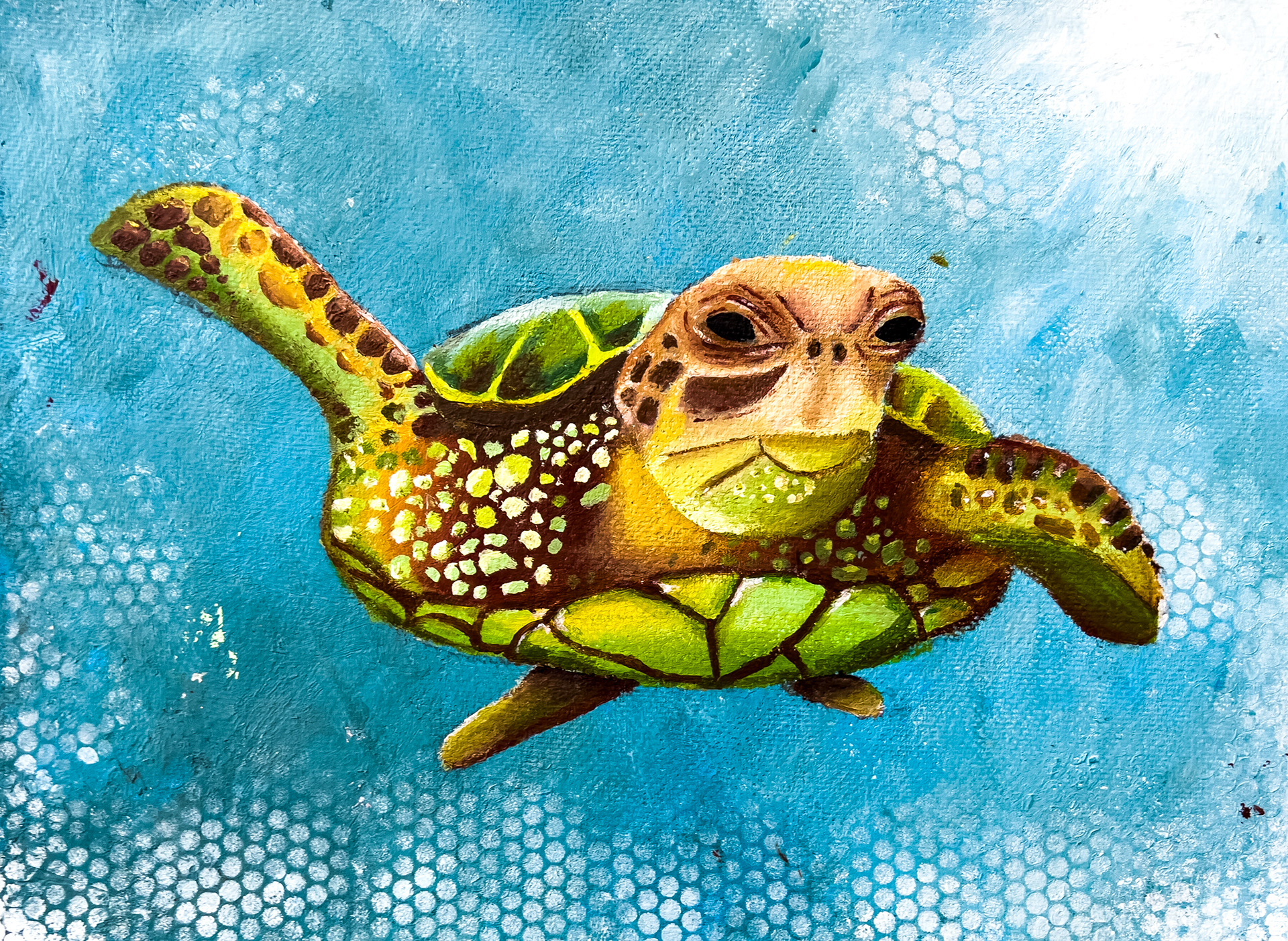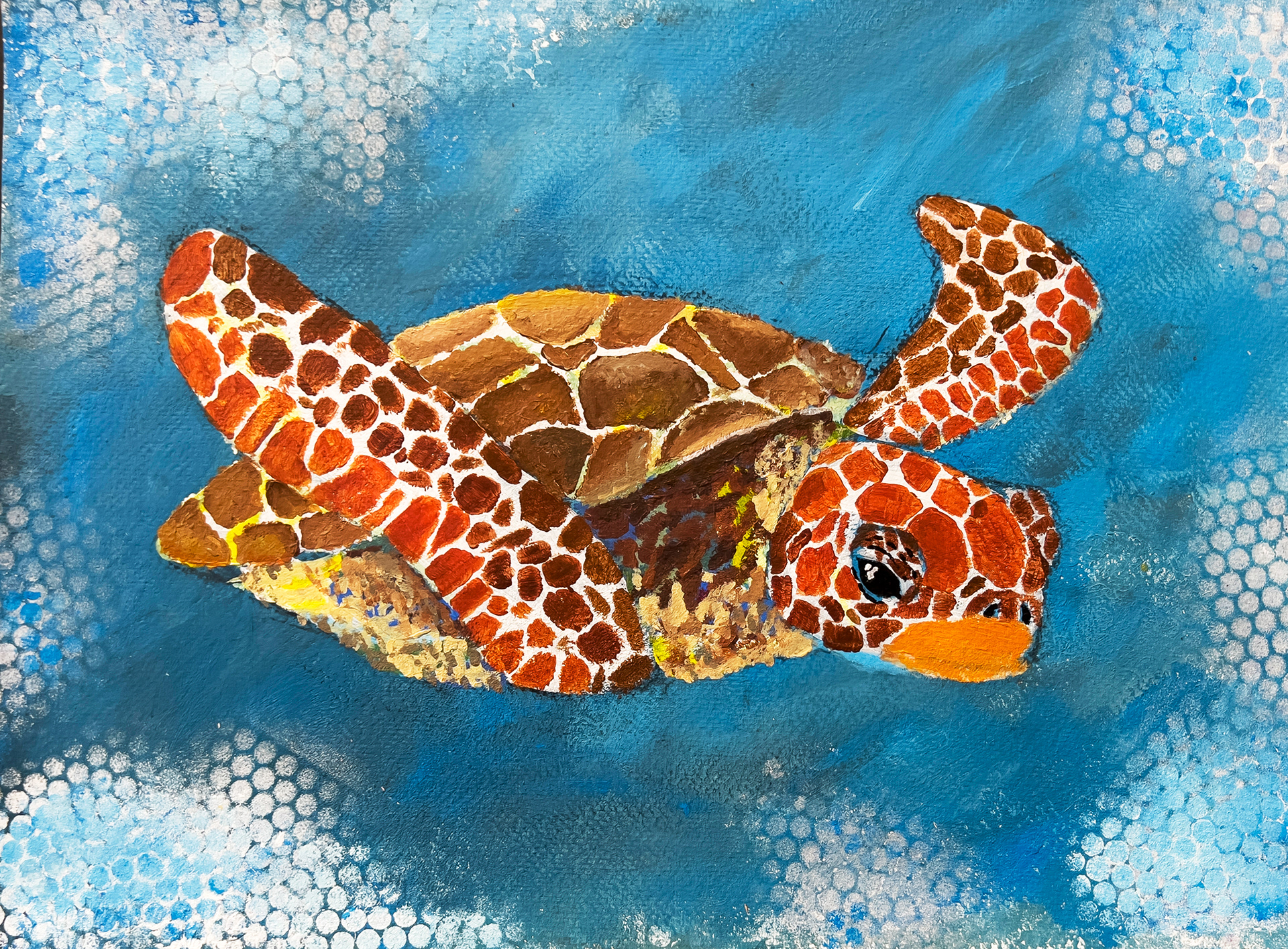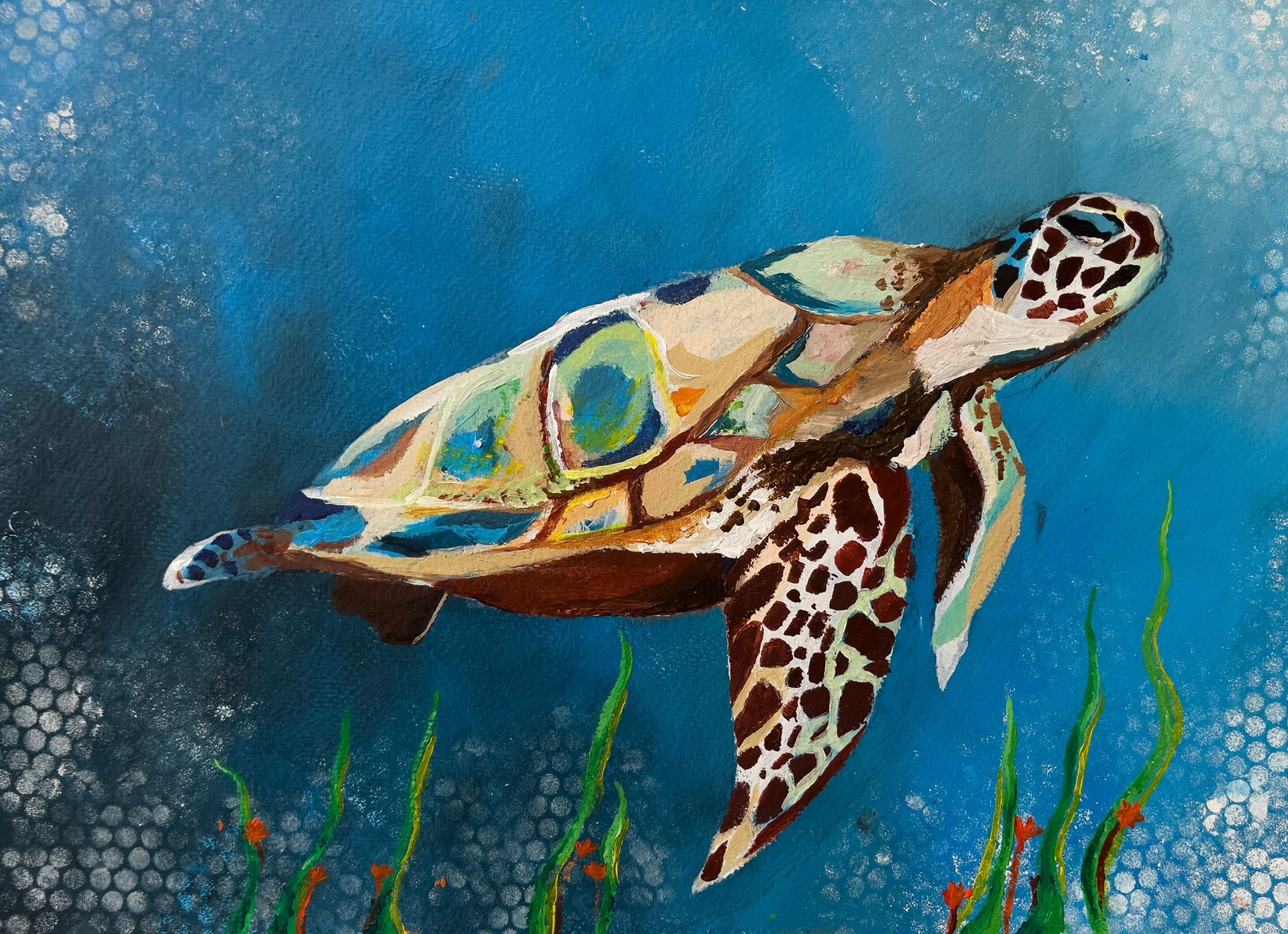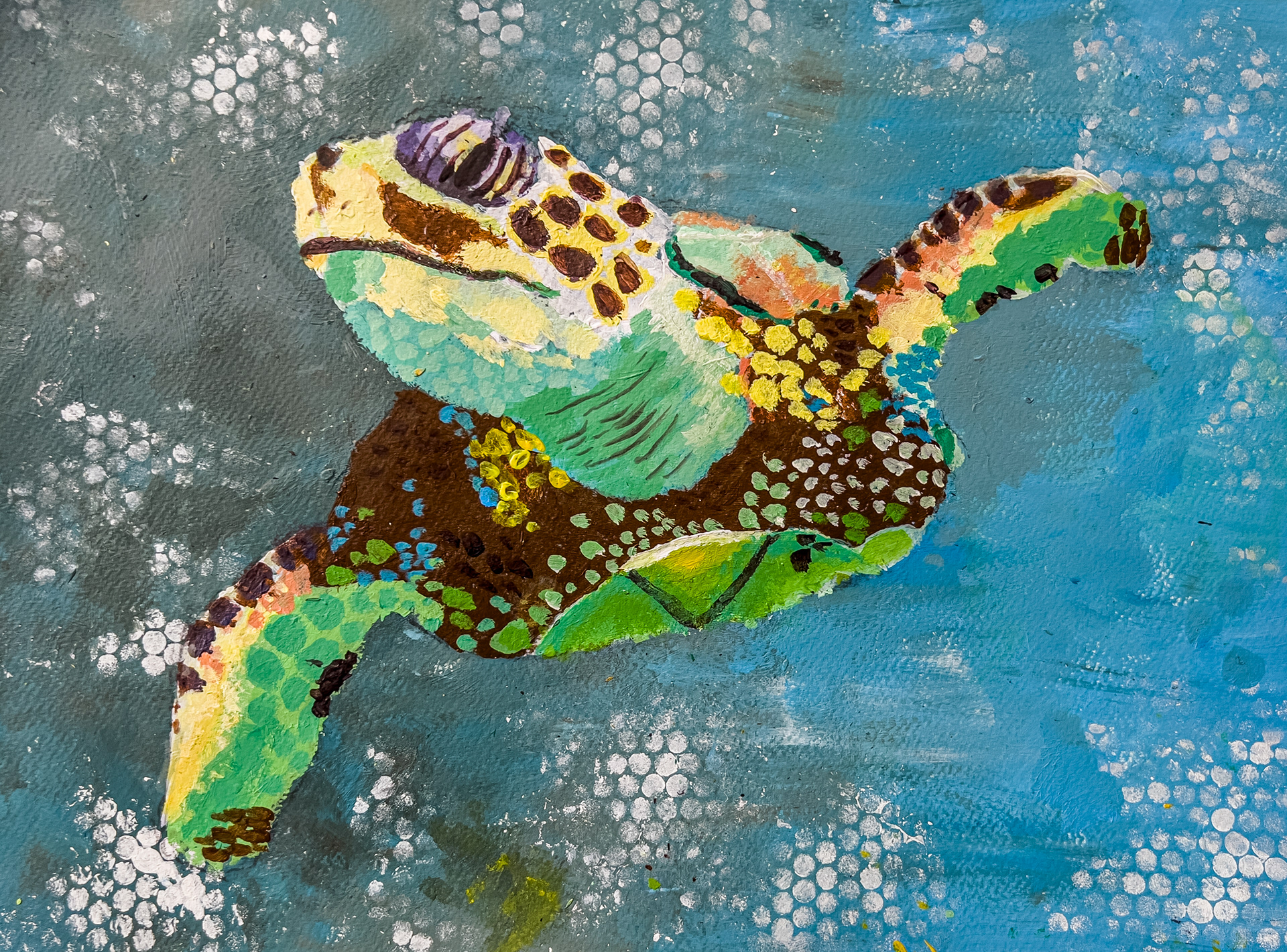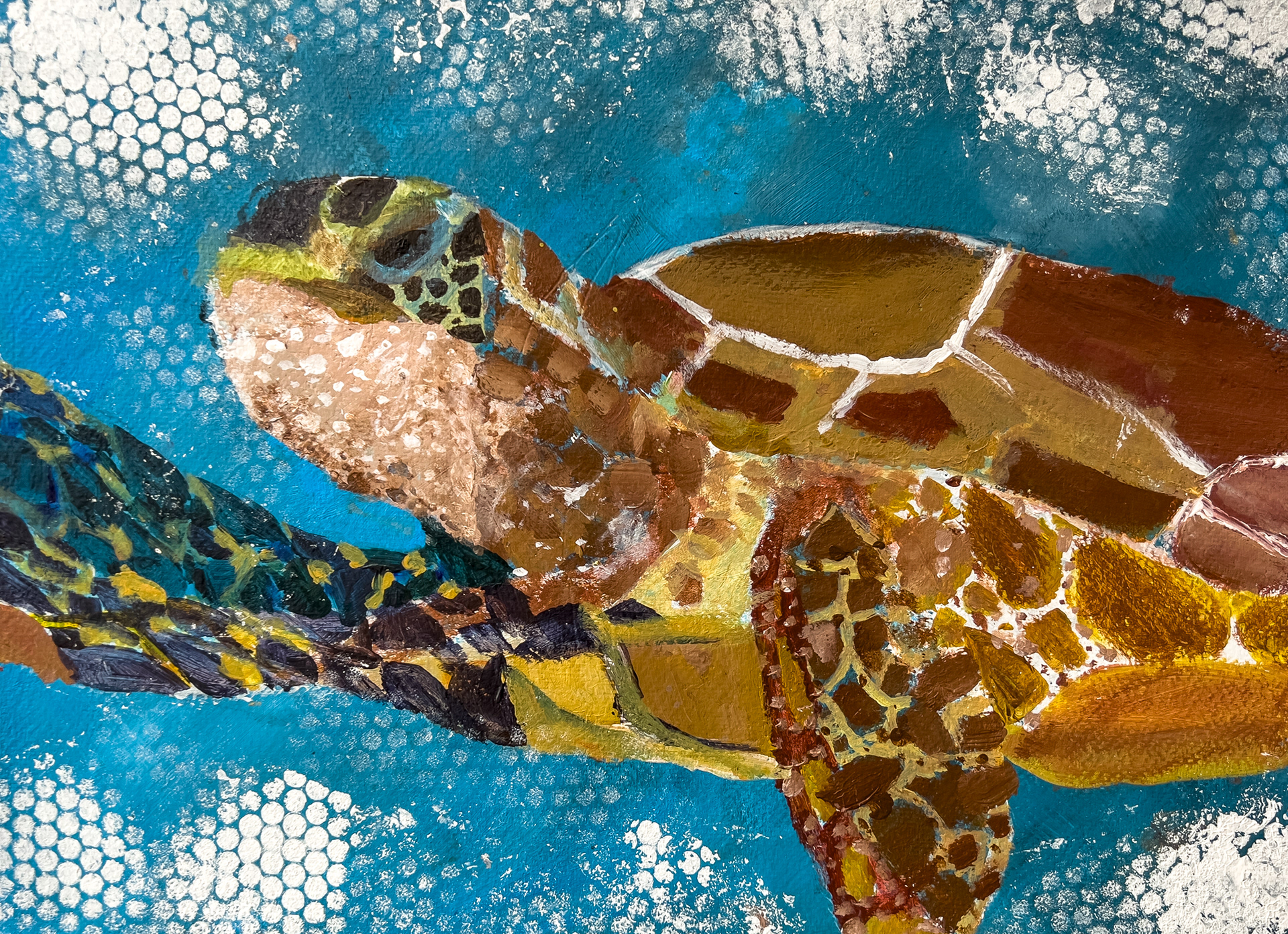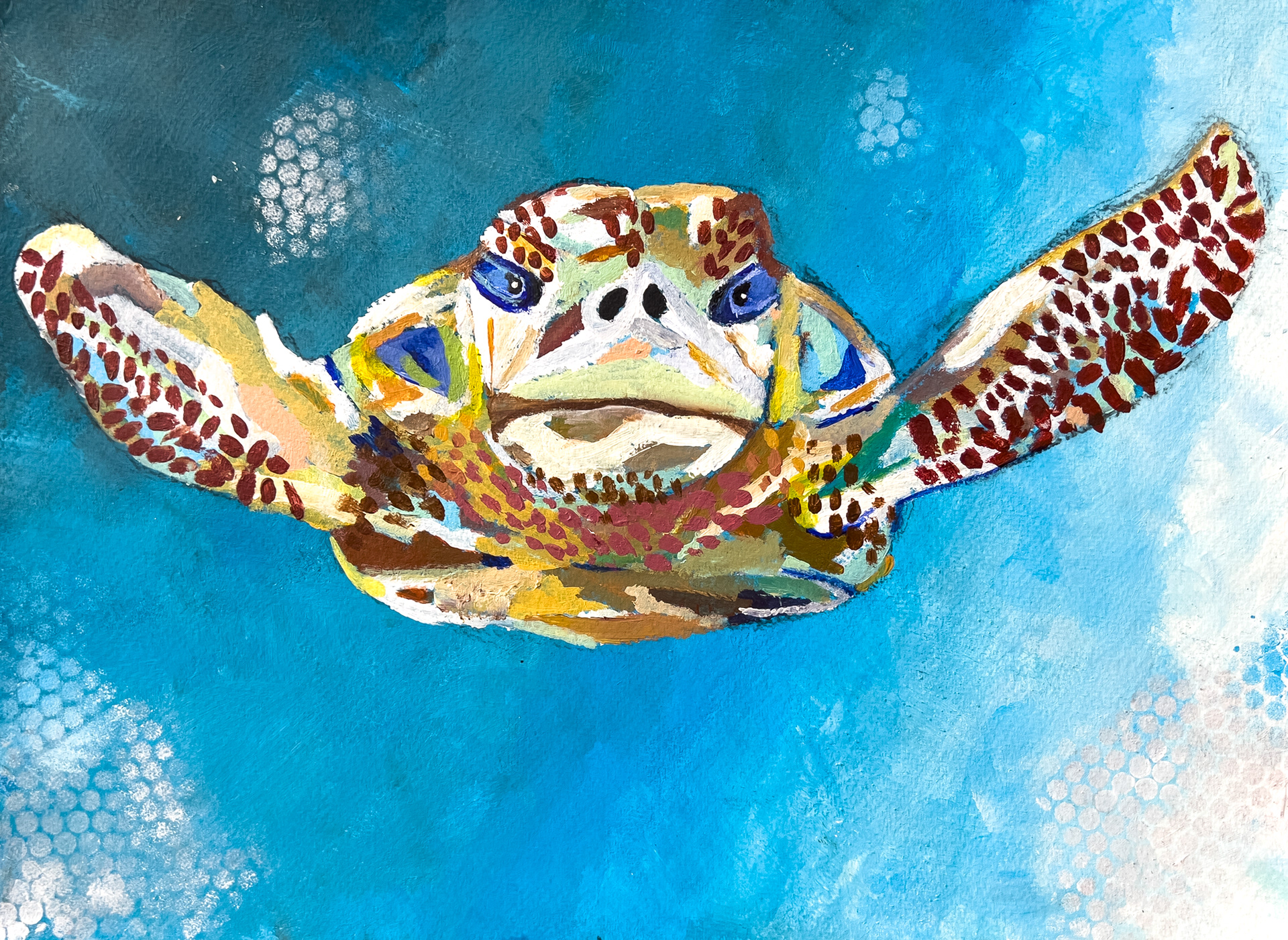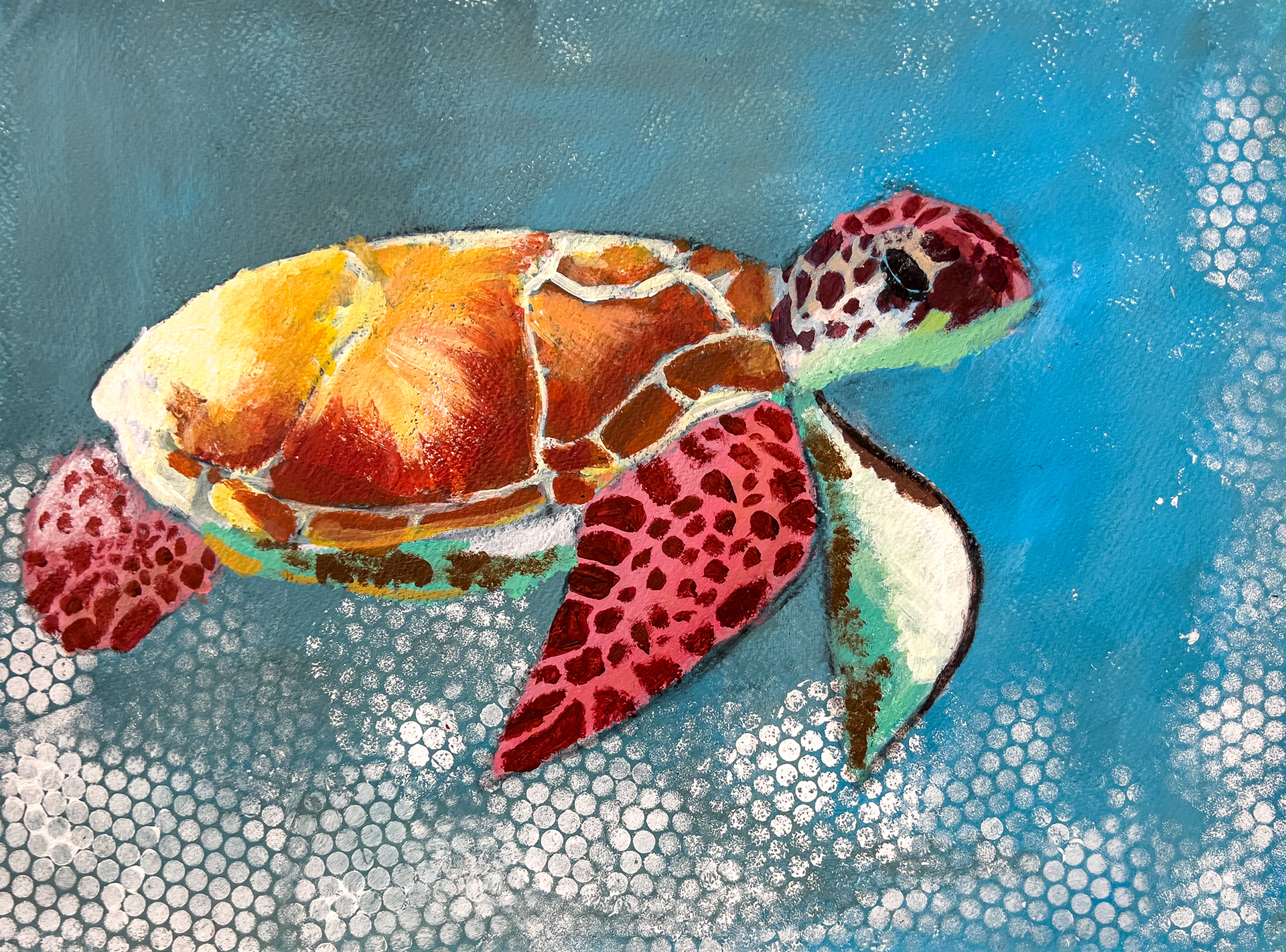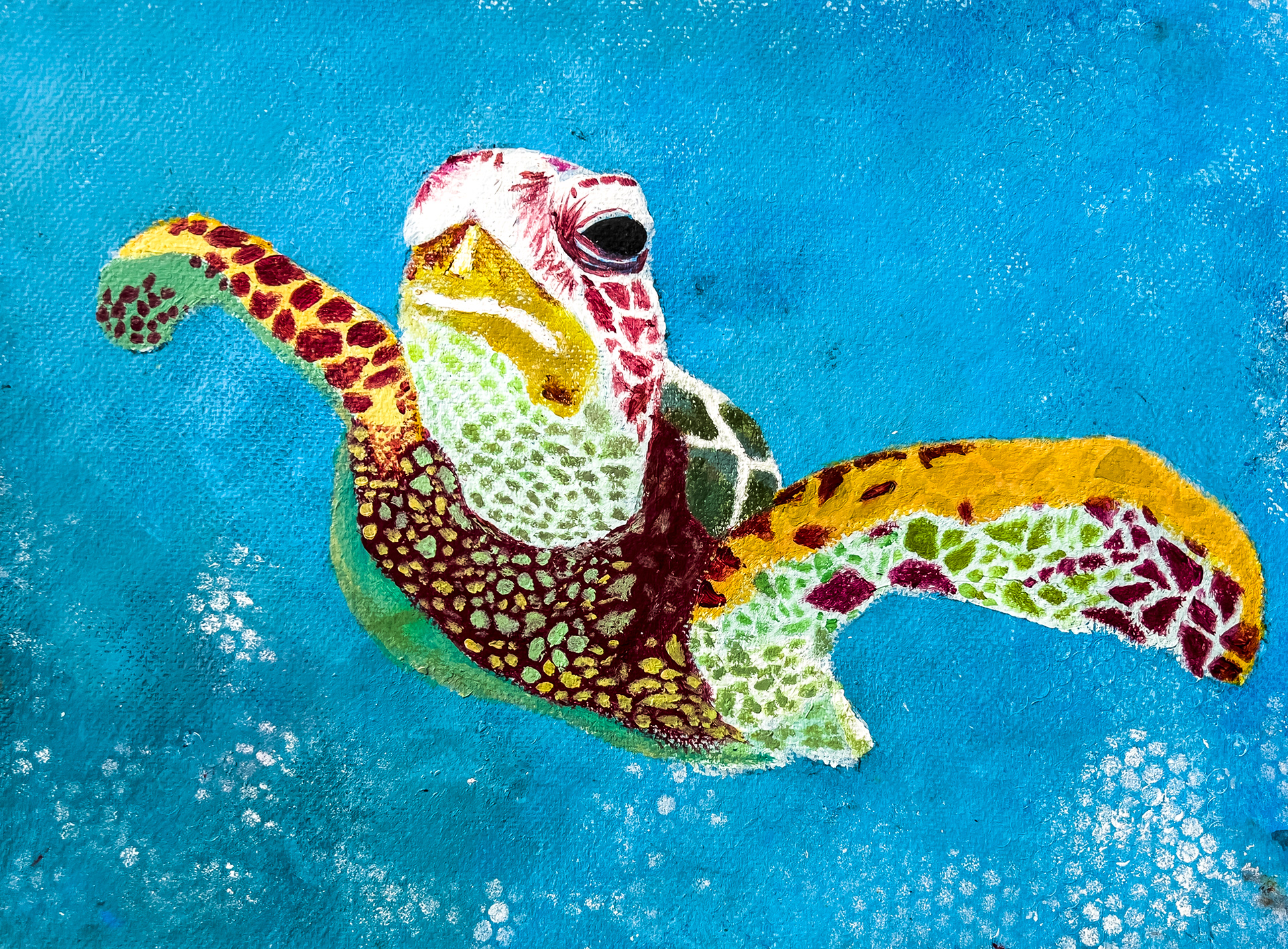Learning Objectives:
• Learn how to apply and manipulate acrylic paints, showing particular control of paint consistency
• Experiment with expressive paint techniques
• Understand the role of colour in painting
• Experiment with expressive paint techniques
• Understand the role of colour in painting
What you will need:
A reference image, watercolour paper (or your sketchbook), a soft pencil (preferably 2B or 4B), ruler, eraser, pencil sharpener, acrylic paints, a small brush, a larger brush, a pot of water, a paper towel, punchanella and a sponge.
Following on from last lesson...
You should have painted your background, added some texture using punchanella and let it dry.
Today's task:
Draw the outlines in either charcoal or a soft pencil. I found charcoal showed up better, but it does smudge easily.
Draw the main shapes, but not every detail, like mine below...
Follow the steps in the video below and refer to the tips at the bottom of the page.
The finished painting:
Top Tips:
• Start with the lightest colours and build up to the darker colours
• Adding a bit of water can help the paint to flow better, but it also makes your colour a bit transparent, so use as little as you can
• Apply more pressure to your brush for thicker lines and less pressure for thinner lines. Gentle lift your brush up as you paint to vary the thickness of your lines as you go along
• Concentrate on the main shapes to begin with - the details can come later
• If you make a mistake, you may need to leave the paint to dry before going back over it
• Sometimes the charcoal 'muddies' the paint, e.g. turning white paint a bit grey. If this happens, let the paint dry and go over it again
• Clean your brush between colours to prevent unexpected contaminations
• Adding a bit of water can help the paint to flow better, but it also makes your colour a bit transparent, so use as little as you can
• Apply more pressure to your brush for thicker lines and less pressure for thinner lines. Gentle lift your brush up as you paint to vary the thickness of your lines as you go along
• Concentrate on the main shapes to begin with - the details can come later
• If you make a mistake, you may need to leave the paint to dry before going back over it
• Sometimes the charcoal 'muddies' the paint, e.g. turning white paint a bit grey. If this happens, let the paint dry and go over it again
• Clean your brush between colours to prevent unexpected contaminations
Examples of previous students' paintings:
What do you think has gone well and what could have been improved?
